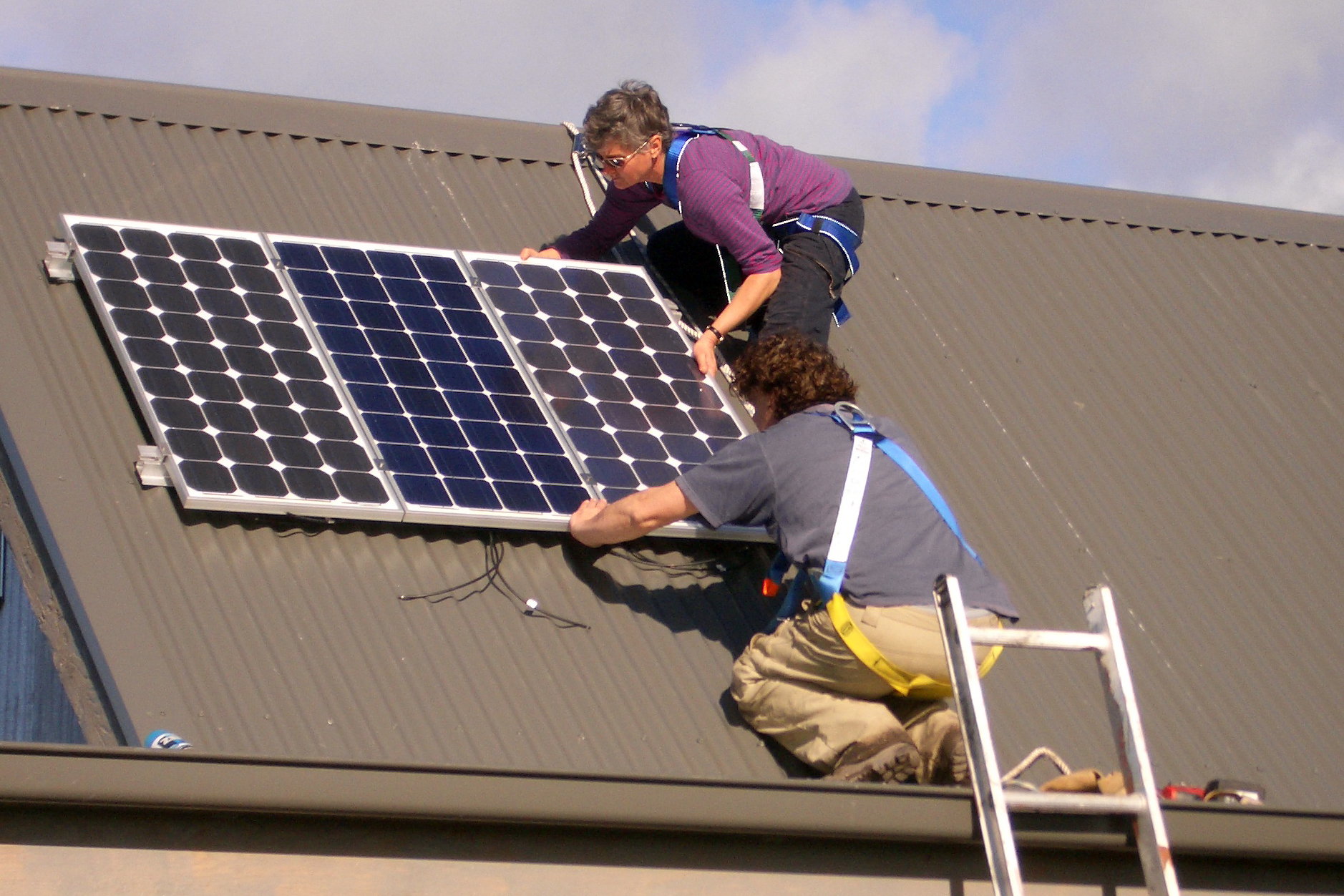Coconut fibre twine
Coconut fibre twine
One of the first things I wanted to do after moving into a passive solar house near Daylesford was to install a solar array for electricity. Not a particularly remarkable aspiration in 2017, but this was 1998. The only households that had solar panels at that time were ones where grid connection was economically unviable.
I was embarrassed to live in a state that had one of the greatest CO2 outputs in the world per capita. In an environment that is blessed with sun and wind, we choose to burn dirty brown coal. I worried about global warming and wanted to do my bit, so I spent too much money and installed a 1.8KW grid connected system. Then I volunteered with my local sustainability group and organised households to bulk buy domestic solar arrays. For every 50 installed, the manufacturer provided the incentive of donating a 3kW system to a community facility. We chose the local community child care centre.

Each photovoltaic solar installation represents a tiny contribution to help address the damage humans are doing to the environment. But for us in the western world, the immediate effects of this planet-trashing lifestyle – divorced from our intrinsic connection to the land – are not immediate. Of course I can see change at home, more bushfires, more extreme or catastrophic days where we throw the photos, documents and dogs in the car and head to Melbourne. We might lose the house, but we can rebuild. Compare that to losing yet another culture.
The reality of what our excessive consumption meant was brought home to me when I lived and worked as an AUSAID volunteer in the Pacific nation of Kiribati for six months. My task was to fit out a prosthetics (artificial limb), orthotics (braces and splints) and rehabilitation facility adjacent to the existing hospital on the island of Tarawa, the capital of Kiribati. (pronounced Ki-ree-BAS). This coral atoll is one of 33 islands spanning the equator over a sea area as wide as the Australian continent. Their total land area is about 800 square kilometres, spread out over 3.5 million square kilometres. A small rise in sea level means a lot on an island that’s only 2.5 m above sea level.

The i-Kiribati (the people of Kiribati) and other peoples of low lying islands are likely to become the some of the first climate change refugees. Living and working with the i-Kiribati, I experienced their living connection to land. One of the reminders of the culture of Kiribati that I brought back to Australia was a roll of coconut fibre string. This twine, made from coconut husk fibre is hand rolled on women’s thighs. While they make it, they talk, plan their next dance routines and sing together. The twine comes from the land and binds many things together – like houses, outrigger canoe masts and is used to suspend a jar beneath a cut stem of a coconut palm to collect the sap. At dawn and sunset, young men scale their coconut palms – inherited from their fathers – to empty their sap jars. They sing as they climb. The sap is then used as a refreshing drink or fermented into toddy, an alcoholic drink.
The i-Kiribati will be forced to leave their homes as their islands become submerged and a long established culture will be lost. It’s likely that New Zealand will welcome the i-Kiribati refugees. But without coconuts, there’ll be no more twine, no more hand-made outrigger canoes, no more singing as the men scale their coconut trees or as the women make twine or coconut frond mats.
The world will lose this living culture, like we’ve lost so many indigenous languages and cultures. We’ll lose it because the people will be separated from the land, the plants, animals, marine life and water that sustains them. Their islands will be submerged under the waters of the Pacific.

